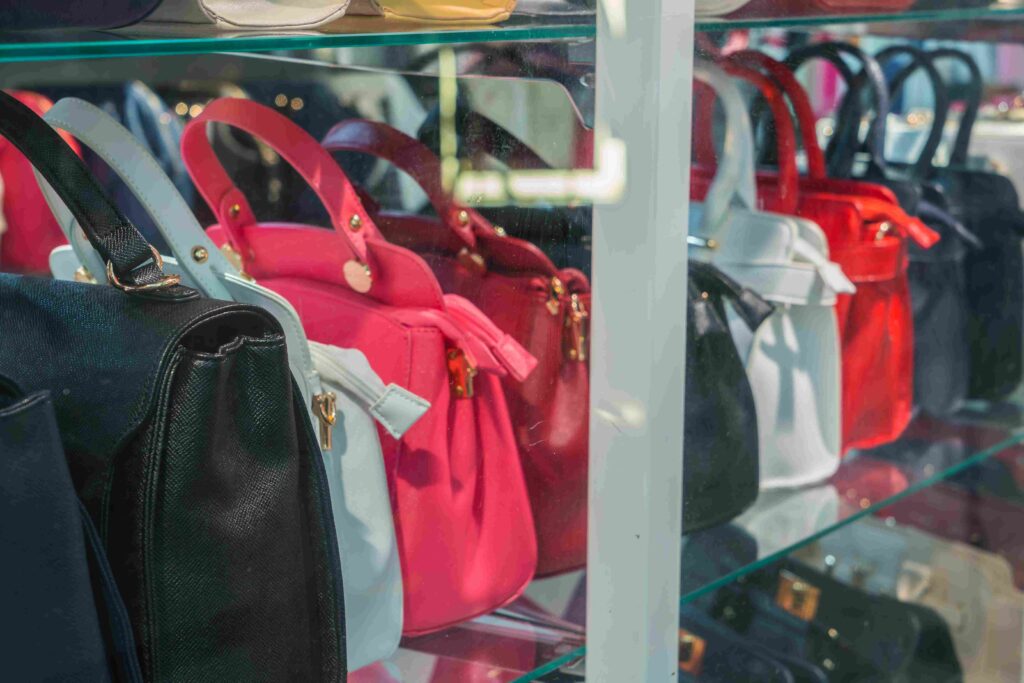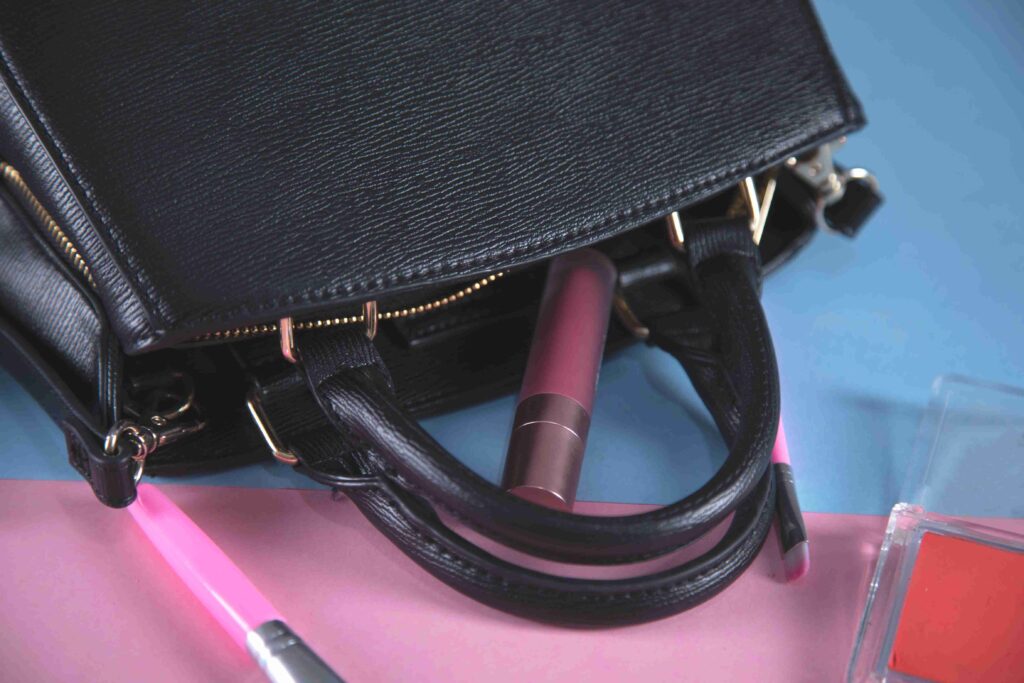Proper handbag storage is crucial to preserving the beauty and longevity of your bags, especially when it comes to luxury designer pieces. These handbags are not just accessories, they’re valuable investments that require special care to maintain their quality and value over time.
For seasonal or rarely used bags, a handbag storage unit can be an ideal solution, offering a secure and organized space to keep them safe. But did you know that storing handbags in a storage unit improperly can lead to problems like fading, mold, or misshapen bags?
Don’t let that happen! In this guide, we’ll show you how to store your handbags safely in a storage unit so they stay in perfect condition for years to come!
1. Assessing Your Handbag Collection:
Before diving into storing your handbags, it’s crucial to take a close look at your collection and assess its unique needs. Start by carefully evaluating each handbag to determine its storage requirements. Consider factors such as the material it’s made of, its size, and how often you use it. Categorizing your handbags based on these criteria can help you tailor your storage approach to suit each one. For instance, delicate materials like suede or satin may require extra care to prevent damage, while larger bags might need more space to avoid being squished or misshapen. Additionally, take note of specific features like leather type, embellishments, and structure, as these can impact how you store and care for each bag. By thoroughly assessing your handbag collection and understanding the unique characteristics of each piece, you’ll be better equipped to devise an effective storage plan that ensures they remain in top condition for years to come.
2. Preparing for Storage:
Preparing your handbags for storage is crucial in ensuring their longevity and keeping them in top condition. Before stowing them away, it’s essential to clean and condition your handbags thoroughly to prevent dust build up and stains from setting in. Use appropriate cleaning methods tailored to the material of each bag; for example, use a gentle leather cleaner for leather bags and a mild detergent for fabric ones. Allow your handbags to air out and dry completely before storing them to prevent any moisture from being trapped, which could lead to mould or mildew growth. By taking the time to clean, condition, and air out your handbags before storage, you’ll help maintain their pristine appearance and protect them from damage while they’re not in use.
3. Choosing the Right Storage Unit:

Selecting the appropriate storage unit is crucial for safeguarding your handbags from environmental factors and ensuring their long-term preservation. Opting for a climate-controlled storage facility is paramount, as it helps regulate temperature fluctuations and humidity levels, which can otherwise cause damage to your bags, such as leather cracking or fabric deterioration. Additionally, it’s essential to ensure that the storage unit has ample space to prevent overcrowding, which can lead to deformation or misshaping of handbags over time. Utilizing shelves, hooks, or cubbies within the unit can aid in organizing your handbags effectively, allowing for easy access and minimizing the risk of accidental damage during retrieval. By prioritizing a climate-controlled environment and thoughtful organization within the storage unit, you can rest assured that your handbag collection will remain well-preserved and ready to be enjoyed whenever you need them.
4. Utilizing Protective Measures:
To provide an extra layer of protection for your handbags during storage, it’s essential to utilize protective measures that shield them from dust, light exposure, and potential damage. Firstly, wrap each handbag individually in breathable dust bags or soft cloth. These materials act as barriers, preventing dust particles from settling on the surfaces of your bags and reducing the risk of fading due to prolonged exposure to light. Additionally, consider stuffing your handbags with tissue paper or bubble wrap to help them maintain their shape while in storage. This prevents the bags from collapsing or becoming misshapen over time, especially if they’re made of delicate materials like leather or suede. However, it’s crucial to avoid storing handbags in plastic bags or containers, as these can trap moisture and create a humid environment conducive to mould growth. Opting for breathable materials allows air circulation, preventing the accumulation of moisture and preserving the integrity of your handbags. By implementing these protective measures, you can ensure that your handbag collection remains pristine, ready to be enjoyed whenever you retrieve them from storage.
5. Proper Placement and Positioning:

Proper placement and positioning within your Storage Unit are essential for preserving the shape and structure of your handbags. When storing them, opt to place them upright rather than stacking them on top of each other. Storing handbags upright helps maintain their form and prevents them from becoming flattened or losing their shape over time. Additionally, avoid hanging handbags by their straps for extended periods, as this can lead to stretching and distortion of the straps or handles. Instead, consider using hooks or shelves to support the bags from underneath. Furthermore, it’s advisable to periodically rotate your handbags within the storage unit. By doing so, you distribute the weight evenly, reducing the risk of creasing or distortion in particular areas. This rotation also allows for proper airing out of the bags and helps prevent any permanent indentations. By following these placement and positioning guidelines, you can ensure that your handbags remain in optimal condition and are ready to be used whenever you need them.
6. Long-Term Maintenance:
Long-term maintenance is key to ensuring the continued beauty and quality of your handbag collection. Make it a habit to periodically inspect your handbags for any signs of damage or deterioration, such as scratches, stains, or loose stitching. Addressing issues promptly can prevent them from worsening and potentially causing irreparable harm to your bags. For leather handbags, regular reconditioning is essential to keep the leather supple, moisturized, and free from cracks or dryness. Use a high-quality leather conditioner and apply it gently with a soft cloth, following the manufacturer’s instructions. This helps to nourish the leather and maintain its original lustre over time. Additionally, for valuable or delicate handbags, consider investing in professional cleaning and restoration services. These experts have the expertise and specialized equipment to safely clean and repair your bags, restoring them to their former glory without causing further damage. By staying proactive with long-term maintenance, you can ensure that your handbag collection remains in excellent condition for many years to come, allowing you to continue enjoying their beauty and functionality.
7. Retrieval and Rotation:
When retrieving your handbags from storage, handle them with care to avoid any unnecessary strain or damage. Gently lift them from their storage location, being mindful of their straps, handles, and delicate embellishments. Avoid pulling or tugging on them forcefully, as this can cause undue stress on the bag’s structure. Additionally, consider rotating your handbags in and out of storage based on seasonal or usage requirements. For example, lightweight, summery bags may be more suitable for warmer months, while heavier, structured bags may be better suited for cooler weather. By rotating your handbags, you not only give each bag a chance to be used and appreciated but also help prevent overexposure to environmental factors like light and humidity. Finally, store your handbags in a visible and accessible manner within your storage unit to facilitate easy rotation. Utilize shelves, cubbies, or labelled bins to keep your bags organized and easily identifiable. This way, you can quickly find the bag you need without having to rummage through piles or stacks of bags.
Why Proper Handbag Storage Matters:

Proper handbag storage is essential to protect your investment and keep your luxury bags in top condition. Here’s why it matters:
1. Protect Your Investment:
Luxury handbags, like those from Chanel or Louis Vuitton, can retain or even increase in value over time. However, damage from improper storage—like scratches, stains, or warping can significantly reduce their resale value. Storing them correctly ensures they remain a valuable asset.
2. Prevent Damage:
Poor storage can lead to mold, scratches, or misshapen bags. For example, damp conditions cause mold, while heavy items can warp their shape. Using dust bags, stuffing them properly, and choosing a climate-controlled storage unit can prevent these issues.
3. Maintain Shape and Quality:
Proper storage keeps your handbags looking their best. Stuffing them with acid-free tissue paper or soft cloth maintains their shape, while storing them in a clean, dry environment prevents materials like leather from cracking or fading.
Common Mistakes to Avoid
- Storing in Plastic Bags: Plastic traps moisture, creating a humid environment that can lead to mold and mildew, damaging the bag’s material over time.
- Overstuffing Bags: Filling handbags beyond capacity can stretch the material, distort their shape, and weaken handles or seams, reducing their longevity.
- Ignoring Climate Control: Exposure to extreme temperatures or high humidity can cause leather to crack, fabric to weaken, and colours to fade, impacting the bag’s overall quality.
- Stacking Heavy Items: Placing heavy objects on top of handbags can flatten, crush, or deform their structure, making them lose their original shape.
Read More: Why Businesses Need Extra Storage
Conclusion:
In conclusion, effective handbag storage is crucial for preserving the beauty and longevity of your cherished collection. By following key practices such as storing handbags upright, using protective measures like dust bags and tissue paper, and rotating them periodically, you can prevent damage and maintain their pristine condition. However, proper storage is just one part of the equation; regular maintenance and care are equally important. Remember to check your handbags periodically for signs of damage and deterioration and consider reconditioning or seeking professional cleaning and restoration services as needed. By implementing these handbag storage tips and making handbag care a priority, you can protect your investment and ensure that your beloved bags bring joy and style to your life for years to come. So, take the time to care for your handbags properly—they deserve it!




